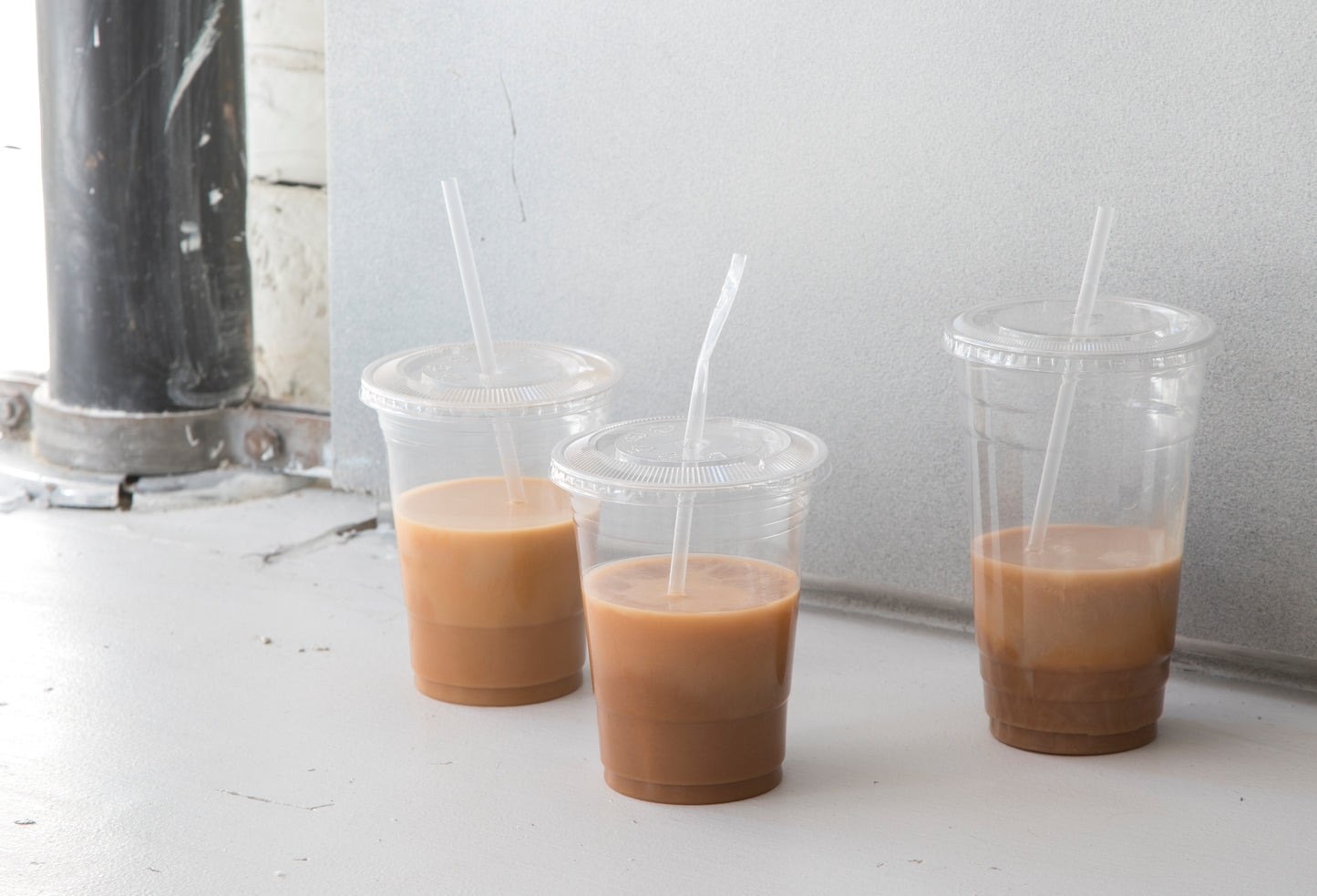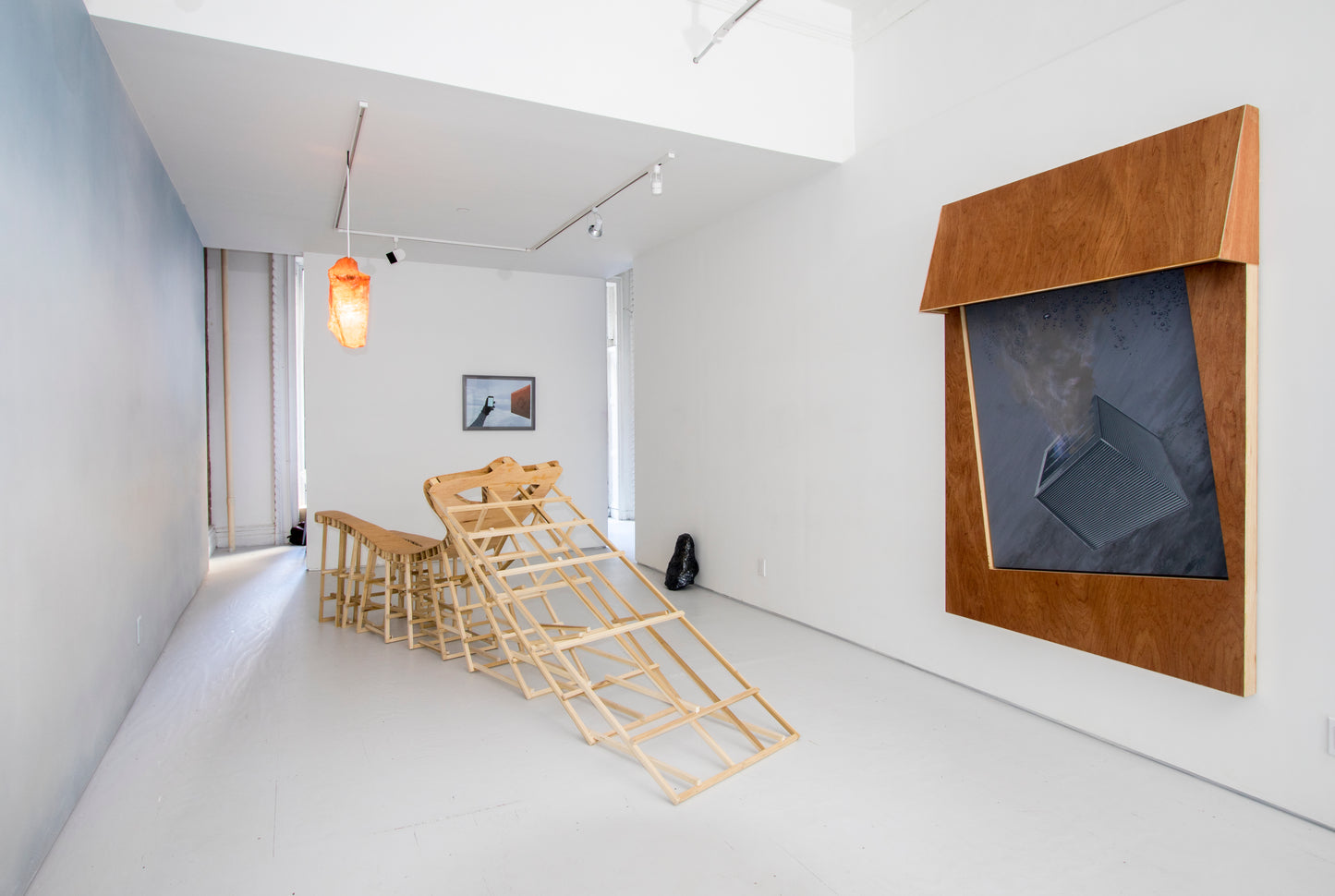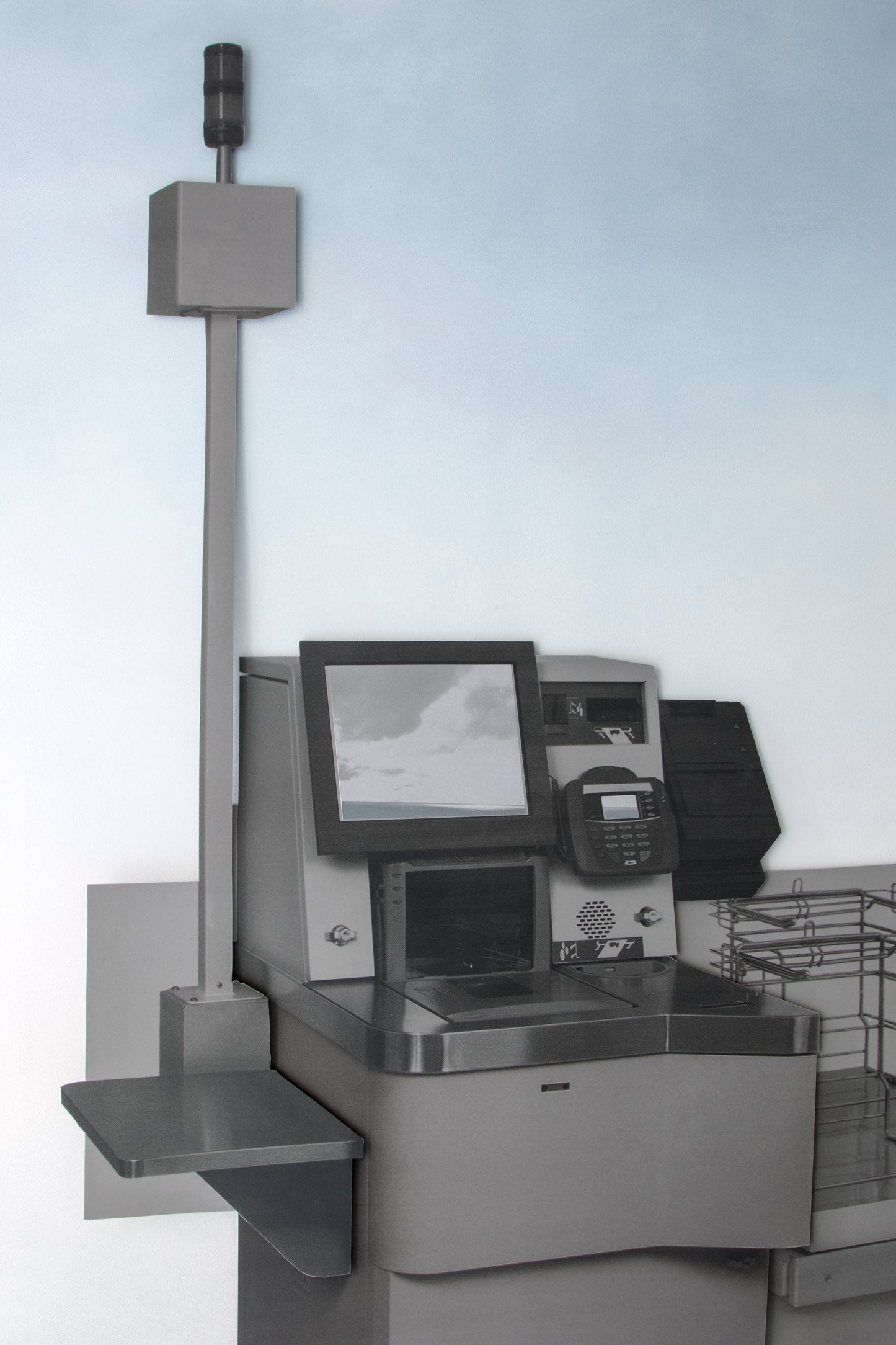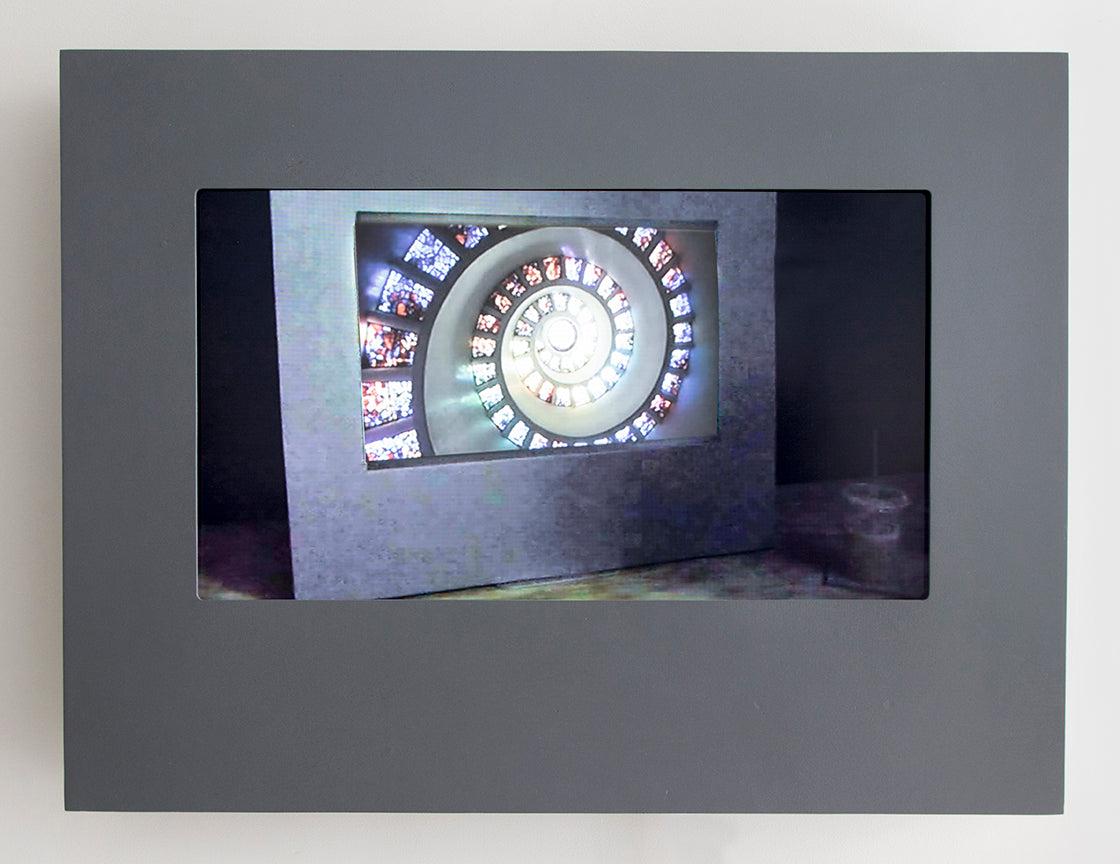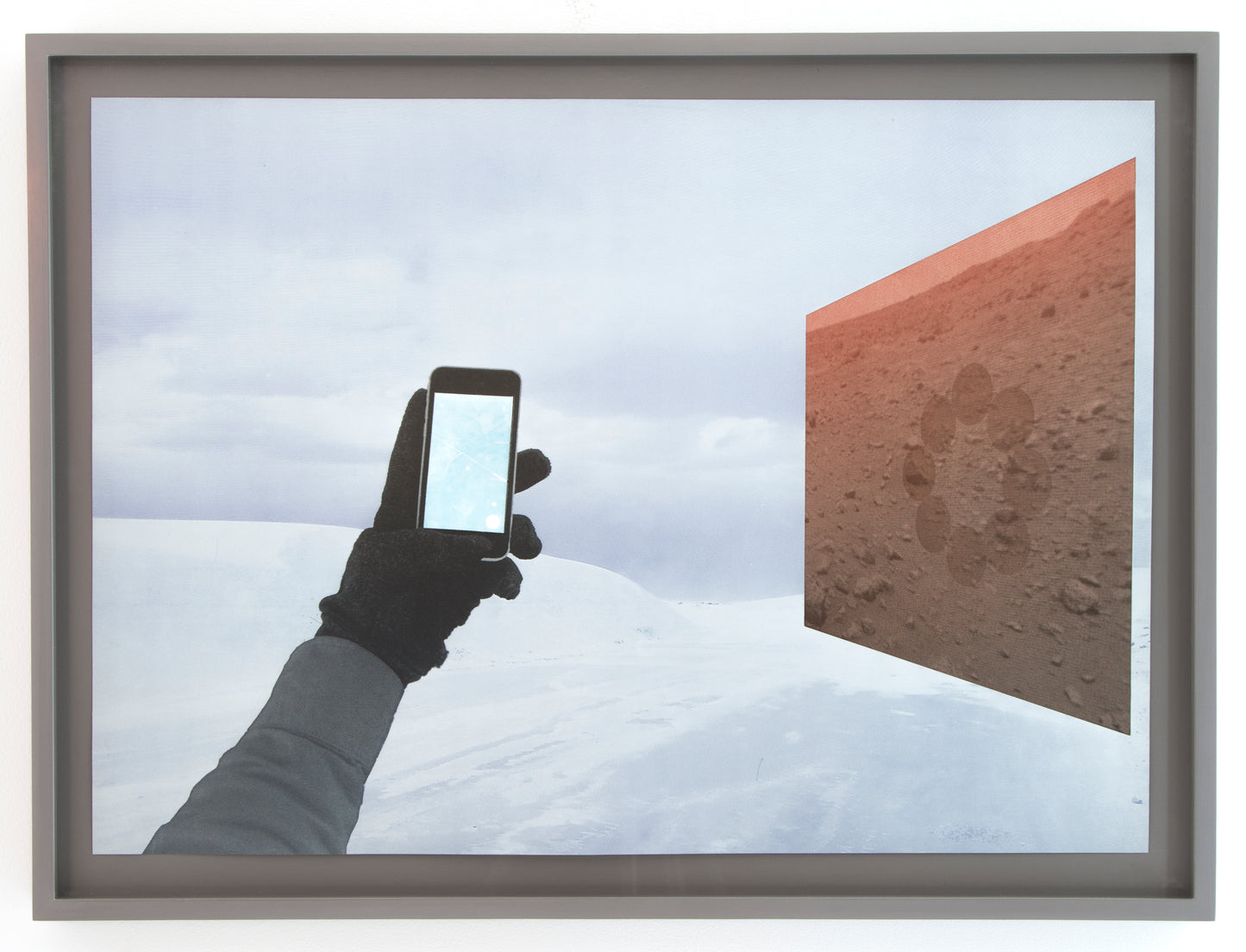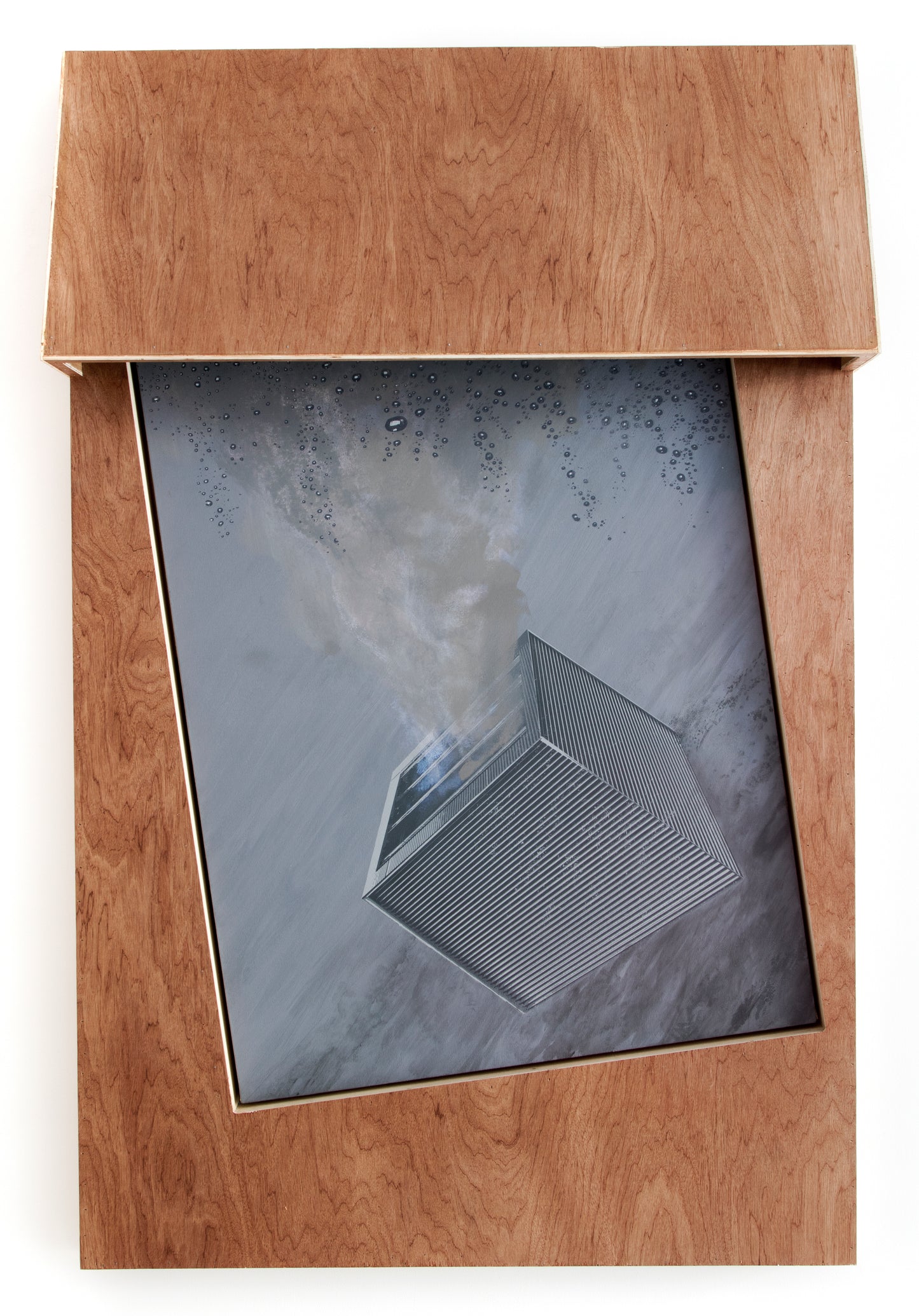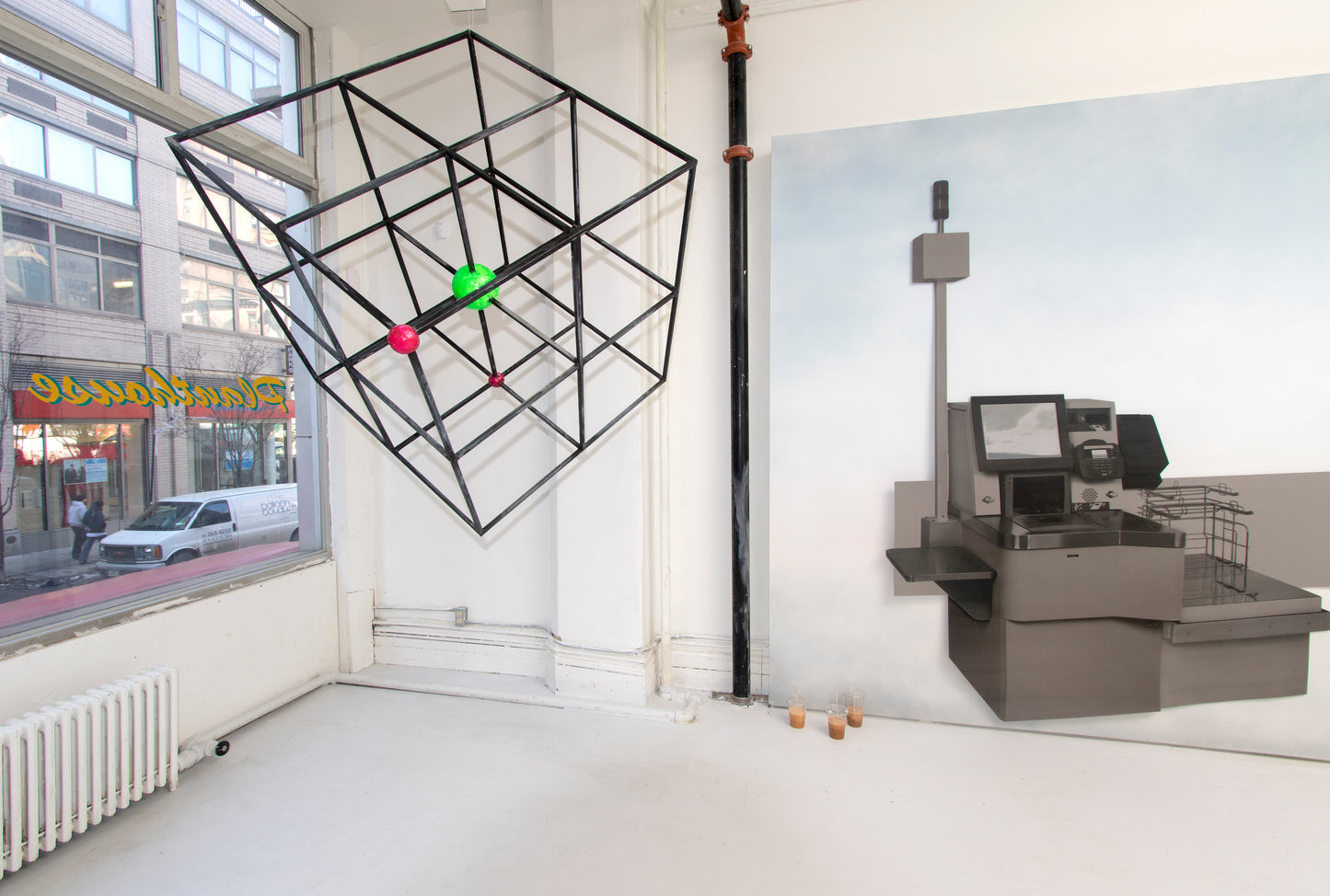Grayson Cox and Nadja Frank | SELF Check Out
March 6 ‒ April 15, 2015
SELF Check Out is a two person show with work by Grayson Cox and Nadja Frank that positions the architectural space in the brain as a place that can be cleared, filled, played within, and even co-opted by external forces with manipulative intentions. In an age of screens and interfaces that compete for our attention, issues of boredom, rest and daydreaming are challenged.
SELF Check Out contemplates this fertile ground as a site for play, curiosity and production; a place from which all life directions comes. The work examines the idea of “checking out” in its conflicting meanings, by addressing the issues of control in the built environment and freedom within our own minds, and asks the viewer to consider their own thresholds for intrusion and will. The show consists of sculpture in many forms, from wood furniture-like construction to hanging metal chandelier like installations, printmaking, photography screen printed sculptures that depict actual self check-out machines, window “screens” offering views of contemplative seascapes, and video constructed from edited clips of Terrence Malick’s entire film catalogue being shown to an iced coffee (one of the muses of ‘checking out’).
The exhibition title SELF Check Out invites a range of interpretation in meaning and action. The idiomatic phrase “check out” is a versatile one. It can mean to die; to look at someone; to investigate something; to verify or evaluate someone; to daydream; to settle a hotel bill; or, to pay for your items at a retail or grocery store. Grayson Cox and Nadja Frank support this multivalent provocation with work that analyzes leisure and consumption from distinct vantages.
Cox has established a repertoire of strategies to mediate social exchange in micro and macro proportions, designing spaces and objects that bring attention to qualities of human interaction. Frank has committed to social interventions that celebrate human introversion and meditation in the face of an ever changing natural world. In fact, the natural world as a disinterested force, that subsumes and challenges our technological experiments, may be the subtext of these artists collaborative display.
On the surface, SELF Check Out looks at anthropocentricity as an endgame of psychic survival and competition in a social environment of hyper capitalization and bulimic consumerism. In this global economy that insists on endless growth and steady profit climbs for businesses, marketing of products and services is bound to become intrusive in all aspects of our lives. Everything is for sale. Commercial advertising is ubiquitous. Even our leisure time has a price figure attached to it (think “Holiday Sale.”) Under these conditions, it is difficult if not impossible to separate our personal lives from our professional labor. Labor and leisure are interwoven aspects of the consumer culture experience. Cox’s image reproduction of an actual self checkout kiosk is indexical of this dilemma. Those machines are supposed to provide time efficiency for the shopper. They also reduce costs for the employer who can afford to hire one less worker per every machine used. Paradoxically this convenience provided to the shopper shifts labor onto the shopper who still must price scan, bag, and pay for their items. Internet service provision works in a similar way, albeit a more elaborate intrusion of labor and consumerism on your leisure time. In short, we pay a service provider for online access to a steady stream of advertisements that shows up wherever whatever it is we browse on the web. Most personal email accounts are surrounded by and immersed in ad content. The billboard, the neon signs, the telemarketer, the menu flyer and more are delivered right to your desktop, laptop, tablet or phone —where at least a few hours of the day you are likely to be working. Convenience aside, most of us pay handsomely for this “service.”
Frank directs our attention to the earth. Her interdisciplinary interest in lithology (the study of rocks), architecture, industrial design and art, imagines a holistic congruence between these things. Petrology is another term for the study of rocks. The Greek word for stone is petros, as in “petrochemical products.” These products include everything from gasoline to plastic syringes. Aggressive extraction of residues generated by rock formation also produces oil, coal, and steel. Mining has accelerated technological development by greatly enhancing human subsistence. We must also con- sider social dysfunctions like war, general human violence, and environmental destruction that have advanced with this achievement. Frank presents a counter-experience to these outcomes of industrialization. She manipulates earth and mineral via artificial salt crystallization processes in the controlled environment of her studio to observe this form of nature’s mutable aesthetic properties. An avid traveler, she collects rocks from all over the world. Integrating earthen material into the indoors, especially domestic spaces, is an eco-political gesture. It is a reminder of where most of our “products” come from, as well as where they will ultimately return. Being psychologically close to nature makes it difficult to divorce ourselves from mortality. Hyper capitalization and indiscriminate consumerism is dependent on a suspension of the concept of death. Endless material acquisition is fundamental to the economic and political system that is capitalism. To believe in capitalism’s absolute efficacy, is to live in a fantasy world. Life is finite; the life force is interminable.
– Christopher Stackhouse
Christopher Stackhouse is a writer, artist, curator and critic. His books include image/text collaboration with writer John Keene, Seismosis (1913 Press); and a volume of poems, Plural (Counterpath Press.) With artists Jared Friedman and Jomar Statkun, Stackhouse is a founding member of the roving artists in residence project This Red Door (see www.thisreddoor.com.) He teaches at the Maryland Institute College of Art.
Grayson Cox (b. 1979, Indianapolis, IN) is a New York based artist working in a variety of media, from painting and printmaking, to photography and furniture-like sculpture. He received his BFA from Indiana University and his MFA from Columbia University in New York in 2010. Grayson is the recipient of the Daisy Soros Prize, the Robert Rauschenberg Foundation Artistic innovation and collaboration grant and has exhibited in New York and internationally including the Center for Contemporary Art, Warsaw, Poland; Bezalel Academy of Art and Design in Tel Aviv, Israel; The School of the Art Institute of Chicago; The New Museum, New York; Elizabeth Foundation, New York; The Fisher Landau Center for Art, Queens, New York; Gowanus Studio Space; The Hudson Valley Center for Contemporary Art; the Sculpture Center in New York, and Gasser Grunert Gallery in New York.
Nadja Frank (b. 1980, Lohr am Main, Germany) received her Diploma in Fine Arts with Honors from Hochschule für bildende Künste in Hamburg, Germany in 2008 and her MFA from Columbia University in 2011. She has exhibited internationally in numerous solo exhibitions including Denny Gallery, New York; 401contemporary, Berlin/London; Margini Arte Contemporanea, Massa, Italy; Galerie Conradi, Hamburg, Germany, and group exhibitions including Kolbe Museum, Berlin; Socrates Sculpture Park, New York; Kunstraum Kreuzberg, Bethanien, Berlin; ICAS Gallery, Singapore; Chelsea Art Museum, New York; Kunst und Ausstellungshalle der Bundesrepublik Deutschland, Bonn; Kunstverein Hamburg. In 2011 she received a DAAD scholarship and EAF Socrates Sculpture Park Fellowship.


